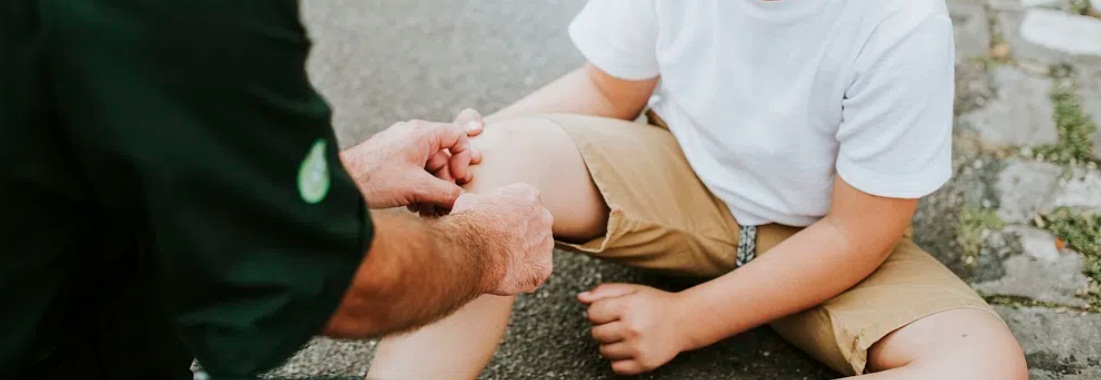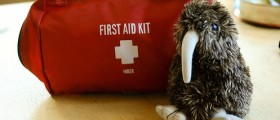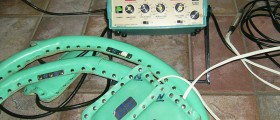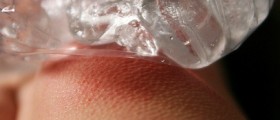Skinned Knee or Elbow – Should Not be a Big Deal
A skinned knee does not pose much of a threat, since skinned patches of tissue usually heal quickly. However, if you fail to attend to the injury properly, there is the possibility of it getting infected. This article will discuss different steps for treating the skinned knee.
A skinned elbow or knee is something that occurs quite frequently. What is more, almost every one of us has experienced it at least once in our lives, if not many times. Especially, when we were kids, since that is the time when we keep running around and falling.
Skinning of the knee or the elbow is a relatively inoffensive type of injury. However, applying appropriate first aid and therapy on time is very important. Even when the injury is just a small one, say a bruise and skinning of the knee skin, the patient may end up with a large-scale infection, if we fail to provide well-timed therapy.

Some Basic Steps to be Taken
The first thing that needs to be done upon receiving the injury, such as skinning of the knee or elbow, is to clean the abraded skin area. Start with cleaning the wound with pure tap water. If there is rough dirt on the wound, you should gently try to remove it as much as you can. Try to perform this in a very tender manner since it can be quite painful.
After that, use soap foam to further cleanse the wound. Massage the wound shortly and tenderly to clean it better, and then wash away the soap using lukewarm water.
In case of gaping laceration of the skin, the patient might need to have a couple of stitches. Visiting the doctor and receiving proper professional treatment is highly recommended in such instances. In case we are talking about a small injury, surface bruising, or mere skinning of the knee, the primary first aid procedure is perfectly sufficient.
If the laceration is bleeding, it needs to stop first for the patient to receive further treatment. Bleeding can be stopped using a paper towel and pressing it upon the injured spot for it to take in excessive blood.
What should be done next is to clean the wound with some liquid disinfectant. The patient should expect some stinging. After that, you may or may not apply hydrogen peroxide or some first aid powder. After it has all dried properly, put a sterile cloth or a band-aid over the injured patch of skin.
- According to the American Academy of Family Physicians, minor cuts can be safely treated at home.
- Here's what to do for a minor cut: Stop bleeding by putting pressure on the area with a tissue, gauze pad, or clean cloth. The bleeding should stop after a few minutes. If the blood soaks through the gauze or cloth, add more gauze or another cloth and apply more pressure. Don’t remove the gauze or cloth to check to see if it's still bleeding until you have kept the pressure for several minutes. (Removing the cloth too often will cause the clot that is forming to be broken.) If blood spurts from the wound, or it does not stop bleeding after 10 to 15 minutes of pressure, seek medical help. You may need stitches. After bleeding stops, rinse the cut thoroughly with cool water. You can either hold the wound under running water or pour water from a cup over the wound. This may cause the bleeding to return. If so, hold pressure as you did before. Use soap and a soft washcloth to clean the skin around the wound. Try to keep soap out of the wound itself because it can cause irritation. Hydrogen peroxide and iodine will harm living cells and should not be used directly on a wound. Use tweezers cleaned in rubbing alcohol to remove dirt, glass, gravel, or other foreign matter remaining in the wound. Apply a butterfly bandage to a deeper cut after bleeding has stopped or slowed. Apply a small amount of antibiotic ointment, unless a butterfly bandage was used. Ointment will loosen a butterfly bandage. These ointments may help prevent infection and keep the wound moist to help the healing process. Some people are sensitive to these products and may develop a rash.
- If a wound is in an area where it won’t get dirty or be rubbed by clothing, it can be left uncovered except for the antibiotic ointment or butterfly bandage. If it’s in an area that will get soiled (like your hand), or an area that will be irritated by clothing (like your knee), cover it with an adhesive bandage. Change the bandage each day - or sooner, if it becomes dirty or wet - to keep the bandage clean and dry.
- Some wounds, such as scrapes that cover a large area, should be kept moist to help reduce scarring. Sealed bandages work best for this purpose.

















Your thoughts on this
Loading...